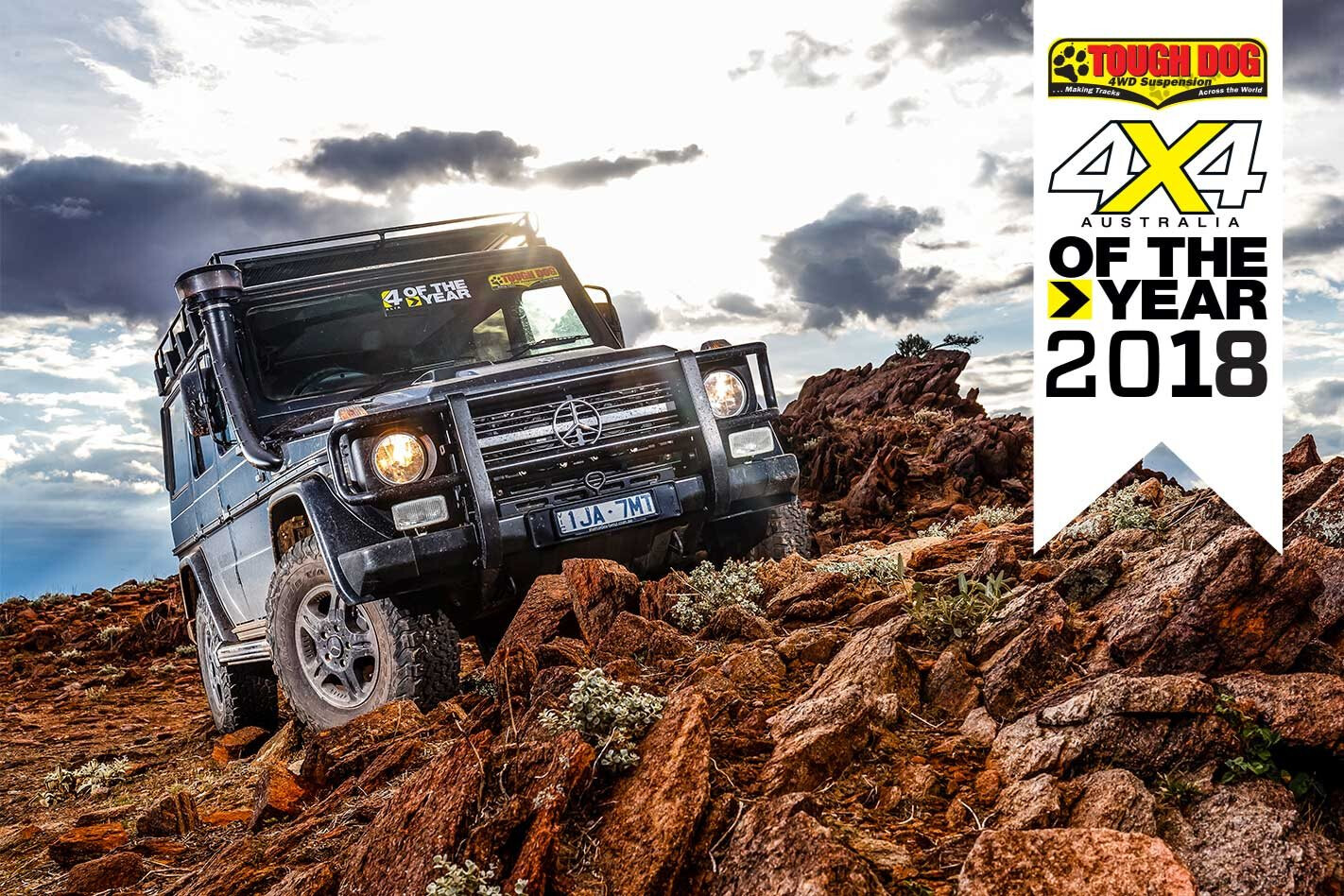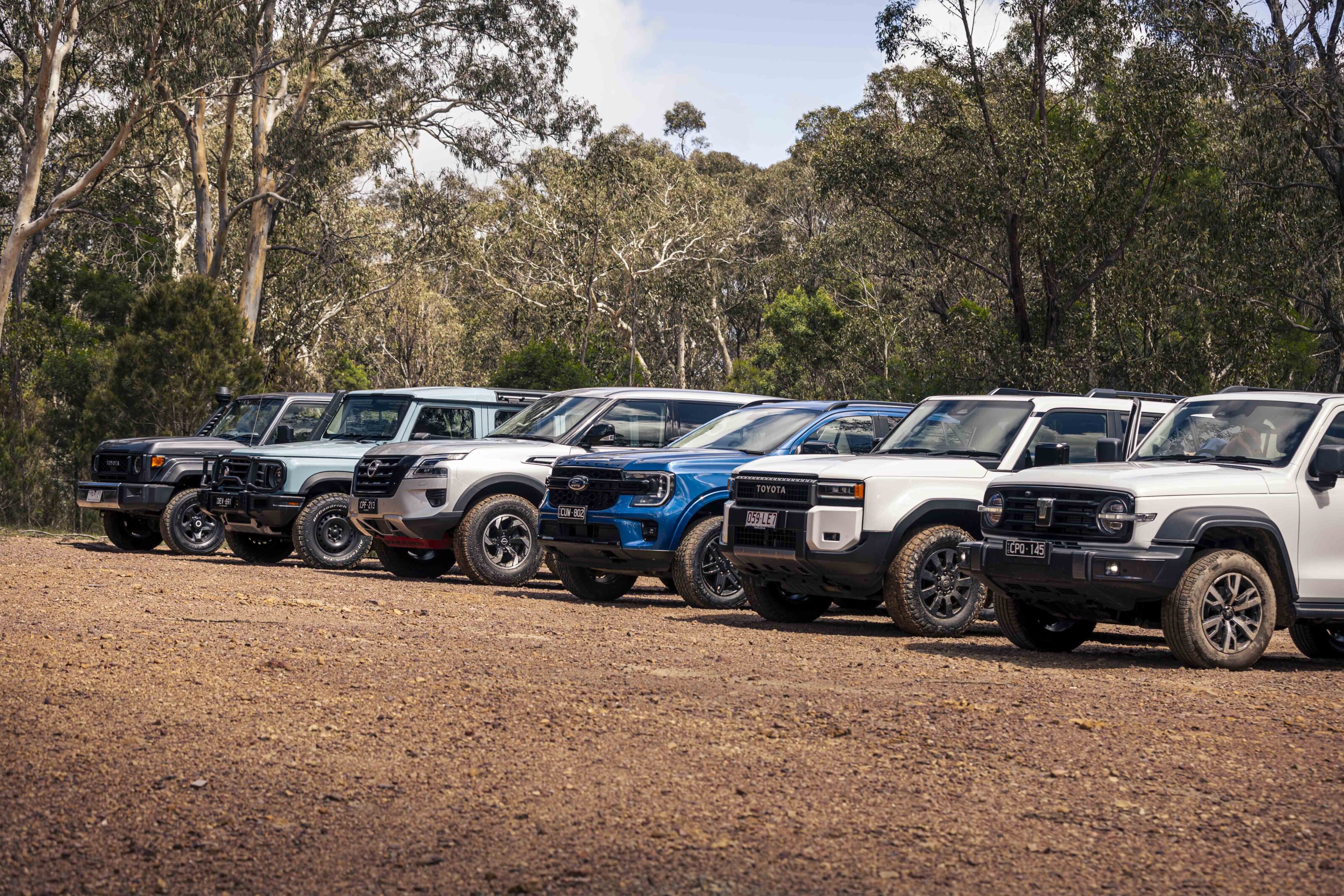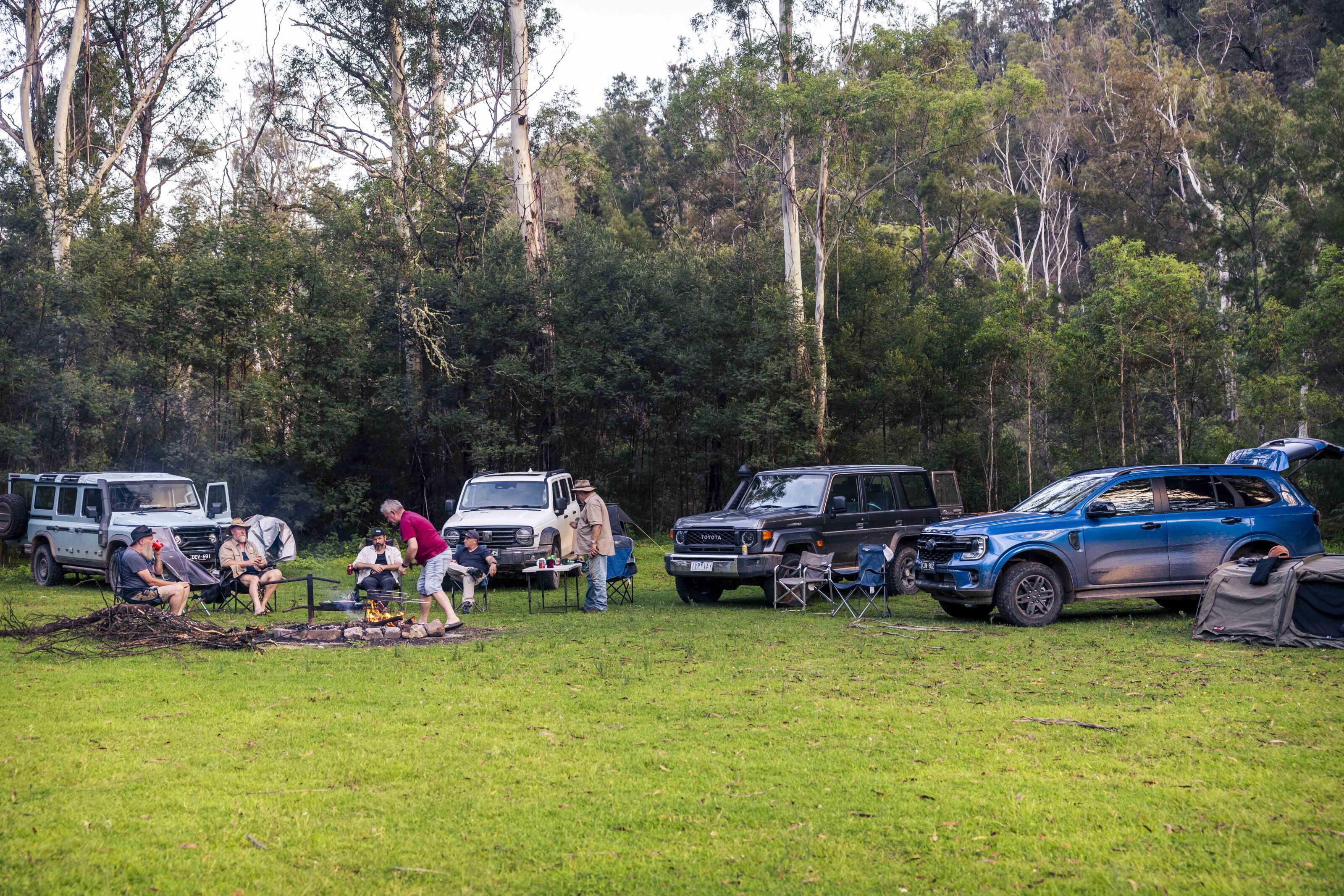Mercedes-Benz’s Gelanderwagen, or G-Class as it is now known, has been in production in one form or other since the hand-built ones were first assembled in 1975, which is a notable achievement in anyone’s books.
More surprising is the fact the G-Wagen hasn’t changed all that much in all that time, outside of the inevitable evolution in powertrains.
Originally conceived for military use as a general light-duty vehicle well behind the lines, the civilian G-Wagen was first offered in Australia in 1983; although, it was withdrawn from sale five years later.
Fast forward to 2011 and Mercedes announced that the G-Wagen would be reintroduced to Australia, effectively off the back of the contract to supply the Australian Defence Force (ADF) some 1200 G-Wagens to replace its ageing fleet of Land Rovers.
Two models were offered to private buyers, the G350 with its 3.0-litre diesel and the AMG G55 with its monstrously powerful 373kW/700Nm supercharged petrol V8. The G350 diesel made our 2012 4X4OTY shortlist.
In 2016, Mercedes expanded the range with the first of two G-Professional models, a single-cab-chassis that made last year’s 4X4OTY shortlist. Now making it back-to-back 4X4OTY appearances for the G-Class is the second of the two Professional models – the G300 Pro five-door wagon.
Don’t be fooled by the Professional tag, as this isn’t a G-Wagen pitched at ‘professionals’ as we know them, but rather it’s a $55K less expensive, stripped-out commercial version of the $165K G350. Another way to look at it is as a civilian version of the G-Wagens supplied to the ADF, and hence a back-to-basics vehicle.
TOURING
Arguably the most significant change from the G350 to the G300 Pro is the use of a more utilitarian powertrain, where the V6 diesel is detuned from 155kW/540Nm to 135kW/400Nm, in part to run on low-grade diesel. A simpler five-speed auto – a long-serving Benz gearbox – replaces the G350’s more sophisticated seven-speed auto.
135kW and 400Nm aren’t bad ‘numbers’, but the G-Wagen is relatively heavy (2350kg) and, worse still, is tall and blunt-nosed, creating a huge amount of aerodynamic drag at highway speeds. The result is the G-Wagen isn’t going to get anywhere all that quickly, and it’s hardly worth trying given fuel consumption jumps quickly above 80km/h. In effect, it’s happy as a 90km/h tourer yet already unhappy by 110km/h, even if it can go faster.
Try to push the G-Wagen beyond its ‘happy’ envelope and not only does fuel use ramp up but so does wind noise. As does engine noise, due in part to the relatively low highway gearing. Not much joy either in the vague steering and disconnected handling that results from having live axles front and rear, all of which reinforces the ‘steady as she goes’ approach best taken when driving the G-Wagen.
Settle back and take your time and the G-Wagen rewards with an upright driving position that’s comfortable over long distances and a great vista courtesy of the low waistline and expansive glasshouse. Touring is all about seeing things, and you see more out of the G-Wagen than modern 4x4s. Full-time 4×4 is also welcome.
TRAIL DRIVING
If the G-Wagen isn’t the ideal tool for a quick highway dash it soon becomes the weapon of choice when you head off into the bush; the rougher and tougher the better. This is where the G-Wagen comes into focus and feels totally at home.
In fact, you don’t even need a trail, as the G-Wagen, thanks to its lofty clearance, robust light-truck all-terrain tyres, solidly engineered chassis and suspension, triple diff locks, standard snorkel and commanding driving position is a genuine off-road vehicle capable of making its own way. Nothing else here gives you the same level of confidence and assurance that it will get you anywhere you want to go.
SET-PIECE HILL CLIMB
No surprises the G-Wagen made it up the set-piece hill climb, but it needed both the centre and rear diffs locked. Despite live axles there’s not a great deal of wheel travel, and keeping the lockers open and relying on the electronic traction control wasn’t sufficient to get it up the hill. And once you lock the centre diff, which cancels traction control, you also need the rear locker. Left in reserve is the front locker…
CABIN AND EQUIPMENT
The G-Pro’s cabin is that of a basic ‘work’ vehicle, even if our test vehicle was fitted with heated, leather-clad seats, a radio/CD player, a wood floor in the load area and electric door mirrors – all factory options. Otherwise, the interior, including the dash that’s unique to the G300 Pro and not shared with the G350, is purely designed for functionality not aesthetics.
This cabin is tall, spacious and boxed-shaped, but only has four seats. The upside is you can walk through to the load area between the two rear ‘bucket’ seats.
PRACTICALITIES
The G300 Pro has a decent 97-litre tank, but, with the heavy fuel use, doesn’t translate to a long touring range. However, it does have a massive 1200kg payload and a very high 6700kg GCM.
As standard the G300 Pro can go bush, but factory options – bullbar, walk-on bonnet, roof rack, side-steps and towbar – add to functionality.
SUMMARY
In many ways the G-Wagen remains a product of the 1970s, which is exactly what you want in a world where modern 4x4s are becoming softer. It’s a 4×4 that harks back to the ‘good old days’ when Land Rovers and 40 Series Land Cruisers didn’t need a track, just a compass bearing.
2018 MERCEDES-BENZ G300 PROFESSIONAL SPECS Engine: 3.0-litre V6 turbo-diesel Max power: 135kW at 3800rpm Max torque: 400Nm at 1600-2600rpm Gearbox: Five-speed automatic 4X4 system: Dual-range full-time Kerb weight: 2350kg GVM: 3560kg Payload: 1210kg Towing capacity: 3140kg GCM: 6700kg Fuel tank capacity: 97 litres ADR fuel claim: N/A Test fuel use: 15.1L/100km Touring range*: 592km Price: $109,900 (+ORC)
*based on test average, tank capacity claim and a 50km safety margin.





